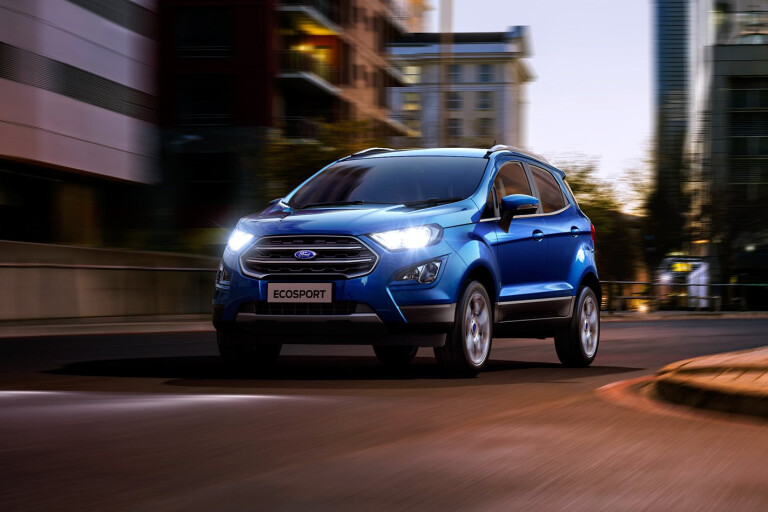
FORD has ditched the controversial dual-clutch gearbox from its EcoSport line-up as the introduction of a traditional torque converter opens up more choice for buyers.
There’s a catch, though, as the shift to the new auto transmission will cost you more at the pump via increased fuel use. Oh, and in adding the auto, Ford has also taken the decision to dump the six-speed manual gearbox.
The former six-speed Powershift gearbox – the subject of a class action from disgruntled Ford Fiesta, Focus and EcoSport owners who claim the dual-clutcher isn’t up to the job – makes way for a more conventional six-speed automatic as part of a significant facelift for Ford’s compact SUV.
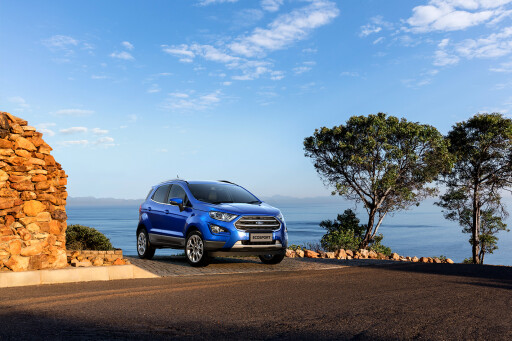
Apart from the significant mechanical change to what’s hanging off the engine, the other big change to the EcoSport is its looks. The ugly duckling of the Ford Australia line-up loses the awkward, surprised face of the previous model for an edgier look that aligns the EcoSport with the other SUVs and light commercial vehicles in the showroom.
Inside, the rehashed interior features “fresh materials”, and a more useful centre console that includes an armrest and a “media bin” with a pair of USB ports. A storage tray also finds its way under the driver’s seat.
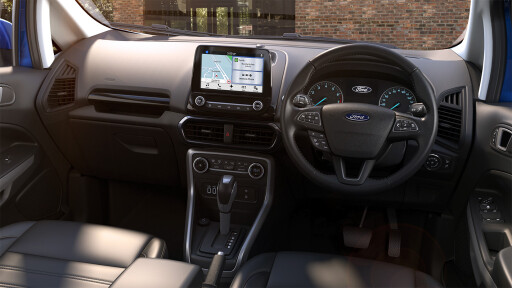
And despite moves overseas to rid the EcoSport of the full-size spare wheel hanging off the tailgate, the Aussie-spec cars stick with it.
The other item that will be a big tick with buyers is the swap to the more traditional six-speed auto now allows buyers to opt for something other than a six-speed manual in cars fitted with the 1.0-litre three-cylinder “EcoBoost” turbocharged engine.

The entry-level engine has also had a tickle as part of this update. The default 1.5-litre atmo three-cylinder engine ups performance from 82kW/140Nm (on 91RON fuel) to 90kW/150Nm.
But the extra poke comes at the cost of fuel economy, which rises from the old model’s 6.5L/100km to 6.9L/100km. The 1.0-litre triple, fitted to the mid-spec Trend and range-topping Titanium, sticks with its 92kW/170Nm power output, with fuel use rated at 6.7L/100km compared with the former manual version’s 5.7L/100km.
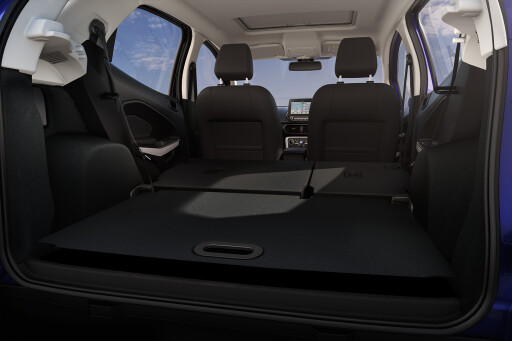
You should notice a bit more versatility in the EcoSport. The rear seats flip and fold forward to produce up to 1178 litres of cargo space. But keep the seats in place and there’s now a height-adjustable floor that can either hide things away from prying eyes or lower to yield more luggage space. Previous versions of the EcoSport have included a luggage bay cover; we’ll be keen to check this when full details of the EcoSport, including pricing, are revealed on December 14.
However, with no price-leading $20,790 manual version, expect the fresh-look entry-level soft-roader to up the cost of joining the EcoSport club.
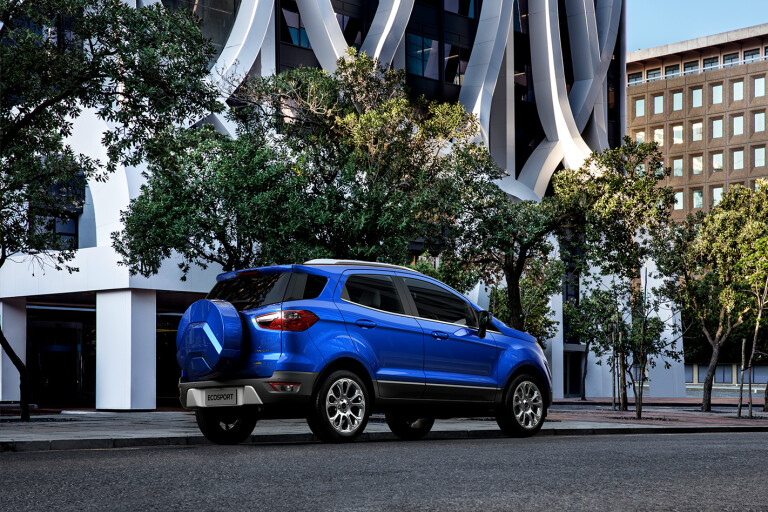

COMMENTS